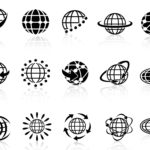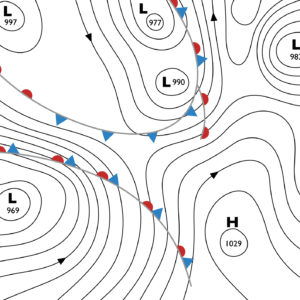
What Climatology Is
Climatology, or sometimes known as climate science, is the study of the Earth's weather patterns and the systems that cause them. From the ocean oscillations to trade winds, pressure systems that drives temperature, airborne particles that influence local conditions and even the phases of the moon and Earth's wobble all affect the climate (1). The word “climatology” comes, as may scientific words and terms do, from the Greek. Klima means “zone” or “area” and “logia” means “study”. This means that climatology is the “study of zones” although in reality it is much more complicated than that.
Climatologists today are almost universally directing their efforts towards understanding, explaining and attempting to do something about global warming, but as you will see in the list below, that is not the science's only puzzle to solve nor the limits of its interest (2). Until relatively recently, it was considered a dry and uninteresting, yet necessary area of science. But since it became clear that human actions are damaging the environment and changing the climate, it has become much more prominent nationally and internationally with most government departments in most countries having responsibilities to mitigate or prepare for climate change scenario.
What Climatology Is Not
Climatology is not meteorology; both concern weather patterns and their causes and effects, but differ in many ways although they will be interested in each other's data. Climate science examines long-term patterns and trends whereas meteorologists examine short-term weather patterns and their impact, climatologists study long-term trends such as temperature change, water and ice levels, cloud cover, flood and drought patterns, and their long-term, long-range impact on various topographies and globally.
- Meteorology is what the weather is doing now whereas climatology is what you expect to see (1)
- Meteorology is short-term effects and results, climatology is long-term consequences
- Meteorology concerns small areas; climatology concerns much larger areas, or global results
Even how they use equipment differs. Satellites, for example, are used in meteorology to track weather systems and to monitor atmospheric fronts to predict what the weather will do next. Climatologists use different data sets from satellites - temperatures at various levels through the atmosphere and at ground level, for example, or mapping energy flows and noticing changes that could affect local climate (2).
Natural Variables That Influence Our Climate
Oscillations
Much of the discussion of climatology in public discourse concerns anthropogenic climate change - the contribution of human activity to such events as carbon particles, greenhouse gases, and their effects such as the Greenhouse Effect and coral bleaching. But climatology is not just about the human impact, it is about looking at and predicting the effects of the natural processes on our planet and the Solar System. It is to long-term trends, long-term and large-scale processes to which we direct our efforts in understanding why the climate looks or acts the way it does, and what variations and anomalies can potentially change it. Here are some of the natural trends.
El Niño and La Niña Oscillation
Perhaps the two best-known oscillations are El Niño and La Niña. They occur roughly once every seven years, and the latter always follows the former after a few months (3). They are usually predictable, but the increasing effects of climate change can sometimes push them back to a little later. Known as ENSO, they are opposite effects of the same process and are defined as an oscillation (a variation in magnitude) between the temperature of the atmosphere and the ocean. In this case, ENSO occurs in the eastern equatorial Pacific. Geographically speaking, it approximates to the area between the International Dateline and 120 degrees west of there. El Niño typically arrives between June and December in a given year and takes place with the depletion and failure of replacement of the Pacific Trade Winds following the Pacific monsoon season. The warm air then creates this oscillation and the waters become warmer.
La Niña occurs when the situation is reversed; it usually follows El Niño within a year. Here, trade winds are stronger than normal, moving warm water westward across the Pacific. The east of the ocean is colder than normal while the west is warmer than average. But the effects don't just affect the Pacific, they are global.
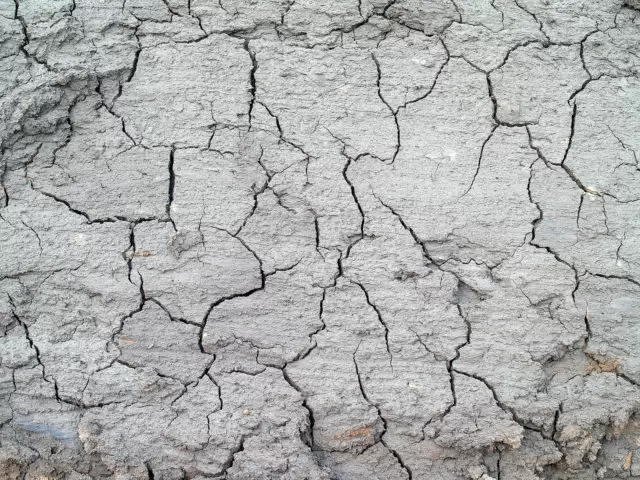
The Effects of ENSO
The biggest impacts are felt in the Pacific area in the immediate and short term, but none of these climate systems exists in isolation. They create knock-on effects elsewhere.
With El Niño, Peruvian fishermen find that anchovy stocks are low (4). Precipitation shifts globally. The Iberian Peninsula in Europe (Spain and Portugal) tends to be wetter from August to November, the tip of South America tends to have higher rainfall too while tropical Africa is drier than normal. But precipitation is not the only impact. Northern Europe tends to be much colder in the winter months while central and western Europe will experience warmer than normal temperatures in the autumn (5 - see maps). Here in the US, the Eastern Seaboard will experience lower precipitation between December and May while the same area will experience colder temperatures between June and September - the height of the summer months.
With La Niña, these effects will tend to be flipped (5 - see maps). Central Mexico and the southern US can expect lower precipitation between the following December and March while the opposite is true just a few thousand miles to the south in northern areas of South America. In fact, most of the central tropics from Africa through the Indian Ocean to the western Pacific will experience higher than average rainfall.
Madden-Julian Oscillation
Not as well known as ENSO, the Madden-Julian Oscillation (MJO), it functions differently (6). While ENSO is static, occurring in one place due to the causes that create those conditions, MJO moves across a geographical area - eastwards along the tropics, bringing higher levels of cloud, increased precipitation and therefore the risk of rainfall. It returns to its starting position anything between one and two months after it began. It can be tracked and was only identified in the 1970s. There may be multiple events in a single place since it moves. It also experiences variable speed, creating conditions ahead, during, and behind it. With each event, there is an increased rainfall event and a suppressed rainfall event.
Why is it important? Tropical weather events are predictable once MJO is on the move, this means preparing for extreme weather (potential drought and flooding) in the tropical areas. But it can have much longer range effects, creating knock-on effects as far away as the northern US, Canada, and northern Europe (7). This is why weather services in the northern hemisphere are increasingly interested in incorporating its effects into their monitoring and prediction services.
North Atlantic Oscillation
The North Atlantic Oscillation (or the NAO) occurs in the northern area of the Atlantic Ocean, the second largest ocean on our planet. It describes fluctuations between the sea level atmospheric pressure from the areas known as the Azores High and the Icelandic Low although these are not set in stone (8). When the waters fluctuate between these two points, the westerly winds direction and strength change. In turn, this also affects the strength, frequency and direction of Atlantic storms. It has been known since the 19th century, and unlike some of the others discussed in this section, it is mostly atmospheric, affected and part of the Arctic Oscillations.
It is a natural oscillation and can massively impact the continents on either side of it - North America and Europe. When one side has certain conditions, the other side has opposite conditions. It will also affect the North Atlantic Jet Stream which keeps Western Europe and North America temperate compared to adjacent areas.
Positive NAO is when warm westerly winds dominate the North Atlantic, bringing warm air from the southern US coastal states northeast towards northwestern Europe. The British Isles, for example, tend to experience warm but wet weather. However, this direction means colder weather in the northern coastal states and Canada on the Atlantic side and southwestern Europe.
Negative NAO also carries weather fronts from North America to Western Europe but in this case, the southern US states experience cold and snowy weather conditions while their northern counterparts experience warmer weather. In Europe, Scandinavia tends to be cold but dry while the Mediterranean Basin is warmer and wetter.
North Pacific Oscillation
The North Pacific Oscillation works similarly to the North Atlantic Oscillation “seesaw” system divided by northern and southern regions. Also, like the NAO, there are two phases. The first is the Aleutian Below (south of the Aleutian Islands), the other the Aleutian Above (north of the islands). They create variable weather patterns depending on which is currently in progress. It's not a well-known oscillation as far as the public are concerned, but its impacts are far greater than the NAO and ENSO. It runs from roughly Alaska to Hawaii (9).
During the “above” phase (known as the deeper Aleutian low), the North American continent is warmer except for certain areas of the western US with higher levels of precipitation over the Pacific Northwest. There is also impact on sea ice during the positive NPO with coverage being more extensive in Bering and Okhotsk Seas.
Pacific Decadal Oscillation
Similar to the ENSO, the PDO occurs over much longer timeframes - measured in decades, hence the name. Typically, the phase lasts for around 20 or 30 years compared to ENSO which lasts no more than six years (incorporating both El Niño and La Niña). It also incorporates both a warm and a cool period during the oscillation - both of which impact upper atmospheric winds (10). Despite its geographic limitations, it can impact global weather and climate, including frequency and intensity of hurricanes across the Pacific and even in the Atlantic. Sometimes, hurricanes in the western US and into Europe are a result of what happened in the Pacific, impacting both flooding and drought effects. Land temperatures and marine ecosystems are affected - the former being increased while the latter's production of plankton reduces, impacting the wider ecosystem. It also has an interesting relationship with ENSO. When they occur together, impacts are magnified but when they are out of phase, it appears effects are effectively mitigated.
Interdecadal Pacific Oscillation
The Interdecadal Pacific Oscillation (IPO) is similar to the PDO but it covers the area of the Pacific area south of the PDO (south of the 20 degrees N latitude), and lasts anything from 15 to 30 years (11). When the IPO is positive, temperatures are lower in the Pacific tropical and subtropical areas but warmer farther to the north. Also, like the PDO, it can have amplification or mitigation effects in conjunction with ENSO with particular and noteworthy differences to the climate of Australia, New Zealand and the seas around those countries.
Other Natural Climate Drivers
The oscillations are just some of the natural forcings on the climate. There are anthropogenic forcings too which are discussed in the next section, but the wind and air interactions are not the only naturally-occurring events.
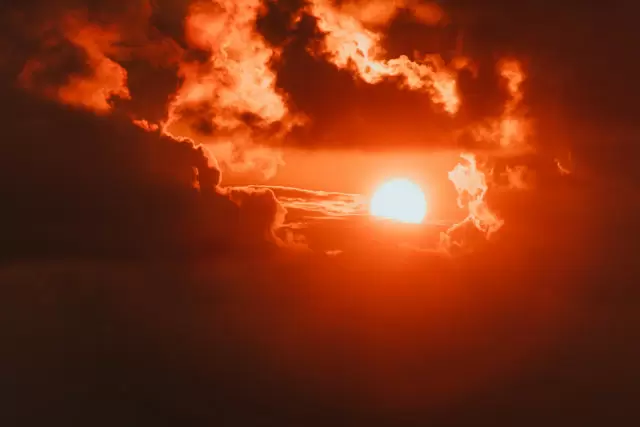
Sun Activity
At the center of our solar system is a star that we call “The Sun”. The sun receives a constant stream of energy produced by nuclear processes that generate an immense amount of heat, light, and radiation. This radiation hits the atmosphere and is absorbed by the ozone layer which reduces the most harmful. The resulting heat and ultraviolet rays that do make it to the surface enable all life on the planet from the plants that use the chemical processes to reproduce through photosynthesis which, in turn, feeds animals. But the sun's energy is not constant. The temperature and therefore the heat levels fluctuate and that can have a knock-on effect for the Earth. It seems that the Sun was responsible for two climate events that took place less than 1,000 years ago: the Little Ice Age and the Medieval Warm Period (17). The decrease in solar temperature certainly contributed to the LIA, but it was by no means the only factor - volcanoes (18) (see below for further details) also impacted global temperatures - there was a lot of it in the Little Ice Age. The Medieval Warm Period (MWP) certainly correlates with an increase in solar activity and a decrease in volcanic activity during the period.
As atmospheric particles increase, so does air density. This leads to the greenhouse effect. Less heat is reflected back into space and more is absorbed in the upper atmosphere. This is what happened on the planet Venus which has dense cloud cover and a runaway Greenhouse Effect (12). Mars atmosphere is too thin; when this happens, too much heat escape, leading to the opposite effect.
Volcanoes
These are immense seismological events that can cause short-term weather effects and, when enough events have accumulated or are particularly large, long-term climate effects. It is largely believed that the explosion of the Thera (Santorini) volcano in antiquity led to the collapse of several complex societies (19), not just the Minoan civilization that inhabited the island at the time, but also deeply affected other powers too and led to the downfall of the Minoan civilization which, just a few years later, was conquered by the Mycenaeans. Writings about the event are found all over the world with some writings from China and physical effects on the climate discovered in North America. It was five times larger than Krakatoa and no other volcano has come close to matching its power. The turmoil that followed was political but also showed the lack of resources in societies led to their collapse.
The Little Ice Age created a brief yet intense change to the northern hemisphere's climate. This was a period of unusually high volcanic activity (18) but evidence on whether this was a cause is still limited and subject to much speculation. But we do know that volcanic activity has an impact - mostly small, but sometimes when there is a lot together or there is a large enough single event, change occurs. In more recent times, Krakatoa in the East Indies cooled the planet's temperature rise and halted sea level rise for at least two decades, and that was one volcano - albeit an intense one (20).
The Human Impacts on Climate
Of course, climatology is not just about the natural variations in the short, medium or long term, it's primarily concerned today with the human impact on climate change and the various “forcings” that are already causing problems. Most of the following issues have impacted the climate since the Industrial Revolution in the 19th century and arguably started before that.
Greenhouse Gases
Greenhouse gases are so-called because their abundance leads to a “greenhouse effect”. Greenhouses are glass buildings used to houseplants that require humidity and shelter from the elements. By nature, they are warmer and more humid than a garden. The effect on the global environment is similar. The greenhouse gases are methane, water vapor, nitrous oxide and carbon dioxide (12).
- Water Vapor creates a feedback - precipitation and cloud cover increases, leading to higher temperatures, but also creates more rainfall which can cool surfaces but can lead to flooding in some areas.
- Nitrous Oxide (13) is a byproduct of agricultural processes. It received much attention in the 1980s with so-called acid rain, but the reduction in this does not mean N2O is no longer a threat
- Methane is a natural gas and one burnt as fuel in many parts of the world, but it too increases air density and the greenhouse effect. The impact is proportionally high considering the low levels of the gas in the atmosphere (14)
- Carbon dioxide is the best-known and most important of all greenhouse gases, it is released through several natural processes but also industrial actions - one of the biggest impacting factors since the Industrial Revolution (12)
- Chlorofluorocarbons (CFCs) are now heavily regulated since it was discovered how much their release was damaging the ozone layer - the gas level protecting the planet from the sun's most harmful rays
Deforestation
Cutting down tree canopies without replacing it passively increases climate change by the simple fact that trees and other vegetation are carbon sinks (15). The fewer sinks we have, the faster carbon emissions will accumulate in the atmosphere and it seems deforestation is increasing despite international efforts to slow it down and replace more trees than we are cutting down. Some of this carbon is heading for the oceans which is now absorbing much more carbon than it has done for a very long time. This is leading to ocean acidification and coral bleaching which is upsetting the delicate balance of marine ecosystems (16), reducing ocean life that has come to rely on coral reefs to survive.
A History of Climatology
The Ancient Past to the Modern Age
Many of the ancient precursors to modern science lived in Ancient Greece, Ancient Rome, and the Islamic Middle East. Two names that come up repeatedly are Aristotle and Theophrastus; the latter was a pupil of the former and made note of some strange climatic phenomena. He was a known early ecologist, noting how changes to a local climate could change some aspects of how it functioned such as how draining swamps brought the temperature down (21) and how a tree existed in a landscape, its profile, was largely determined by the climate in which it lived - plants thrive when living in a “favorable place”.
Dawn of The Industrial Revolution
Little is achieved over the nearly 2,000 years with naturalists and others merely making comments and observations. True climatology - and an attempt to divide climate change between the natural and the anthropogenic factors - arises to around the time we began to understand how our mining for resources and increasing carbon emission could alter the planet. It was during the 19th century and the rush for paleontological and paleobotanical fossils, a period in which humanity discovered the bones of extinct creatures such as dinosaur bones and megafauna from much more recent times that we began to understand the importance of ecology and geology and impacts on climate (22). The history of climate science/climatology is also, in many ways, a history of ecology and a history of paleoclimatology. These areas are intrinsically linking in many ways. Particularly, the idea that a climate could change quite dramatically - desert revealed as once being a tropical swamp, the Arctic circle being more like lush tundra than fields of ice, the retreat of sea levels and ice demonstrated quite clearly how the landscape can change dramatically. Ice Age Theory (23) developed through limited evidence as research headed into the 19th century and towards the Industrial Revolution.
Yet it remained, until the 20th century, a subdiscipline of meteorology, It was during the height of the Industrial Revolution that chemists identified the greenhouse gases listed above. Many of these were being pumped out by the thousands of tons each year, with the warming effects of CO2 emissions identified early on. At the time, it was still linked to studying ancient changes to the planet including Jean-Pierre Perraudin who posited that mountain valleys and the boulders within them were created by ancient glaciers (24). Initially mocked for such a suggestion, his theory soon gained traction.
The Later 19th Century
Still, climate science remained a small section of meteorology but in 1896 came the first breakthrough into understanding anthropogenic climate change. It all began a few years earlier when American scientist Samuel Pierpoint Langley (25) tried to work out the surface temperature of the moon. He noted lower infrared absorption when the moon was low. Those measurements and others were then used to work out the level of cooling resulting from a lower CO2 level, that that would lead to lower water vapor, more cooling, and more snow and ice coverage. The idea of global cooling based on lower CO2 levels didn't require much of a leap to presume the opposite could also be true (26).
In 1896, the first paper was published attempting to explain and discover sources of increased atmospheric CO2 (27). Volcanoes were an obvious choice, but researchers knew the chemical composition of the coal being burned all over the developed world during the industrial revolution and knew that a byproduct of that burning was CO2. This was the breakthrough that the young science of climatology had been waiting for. However, because emissions were relatively low, it was not seen as a negative thing to take thousands of years (28) - and would not until the turn of the century. Early scientists saw it as a good thing but that was without the understanding of the impacts on ecology, biodiversity, the food cycle, sea levels, and long-term weather patterns.
Early 20th Century
The first half of the century was one of fierce debate centering on the 1896 paper discussed in the last section and the possibility that natural atmospheric changes had caused the past ice ages that researchers had identified; we now know there has been at least five of these (29). Yet still, the evidence for paleoclimate stacked up as the major area of focus for climate science. Studies in clay deposits across the globe showed climate cycles; the evidence for a non-static climate was building. Researchers in the 1920s and 1930s came up with the theory that the oceans could be a carbon sink (28). Later decades would prove this right, but few understood the implications at the time.
Around 1920, it was discovered that the “Solar Constant” was not true; the idea that climate could change through natural means was finally beginning to take shape. In line with evidence from the last century based on the fossil record (paleobotany, paleoclimate data and the anomalies of discovering marine remains in desert) demonstrated finally that planetary systems were not constant (30), that they were always subject to change - our planet, as a living system, had undergone both gradual and catastrophic change and would likely do so again. That would take researchers after the war years to examine, using new techniques and technologies, to finally record and analyze data produced during the modern industrial era.
The 1960s and 1970s
In the 1960s, researchers began looking at the climate and ecology through the lens of humanity's actions. The publication of Rachel Carson's Silent Spring led to the banning of some toxic chemicals, the birth of ecology and research into how and to what extent humanity's actions in industries and every-day life impacted the climate. Many competing theories sprang up. Amongst them was the idea that we were creating a new Ice Age - Global Cooling was posited and then dismissed and despite claims from modern critics of climate science, it never gained traction and remained a fringe theory for its brief life (31). This is also the decade of the Greenhouse Effect and the discovery of multiple ice ages - including small and brief instances lasting anything from a few hundred to a couple of thousand years (32). It is not difficult to see why some early researchers believed in Global Cooling as a very real threat, something that the media ran away with but never lasted in academic literature. There was a slight cooling between 1945 and 1975 that may have fueled this briefly.
Aerial pollution became a big problem and the matter came to a head in the 1960s. Following the publication of Carson's book Silent Spring, President John F. Kennedy announced the formation of the Environmental Protection Agency and the Clean Air Act although neither would come into effect during his presidency. The Space Race made everyone realize that we inhabit just one planet (33), that our resources are finite and should do what we must to protect the natural environment for future generations. As well as having ecological benefits such as reducing pollutants from waterways, it sought to improve damage and risks to climate such as imposing a tax on lead in gasoline (which was eventually phased out). Under Nixon's presidency, the Federal government reorganized to look at ways of reducing pollution through its own actions.
The 1980s to the Turn of the Millennium
By now, climatology was firmly in the ranks of anthropogenic causes of modern fluctuations in the climate. It was, and is, still concerned with the natural changes and many researchers today still examine this aspect of climatology but typically the evidence from this source is produced to demonstrate human activity and use it as a mitigating factor. The 1980s was a turning point in many ways. It saw critical reductions in aerial pollution, the phasing out (in many countries) of leaded fuel in our vehicles (and its eventual ban in 1996) (34), similarly with CFCs (35) which were damaging the ozone layer, climate change data consensus. It was also clear that the mitigating factor of carbon emissions reducing the amount of global warming (sometimes known as global dimming) were never going to be enough to mitigate the heating effect of the greenhouses gases. Consensus only escalated and today, 97% of research data suggests an almost certain correlation between human activity and the present warming (36).
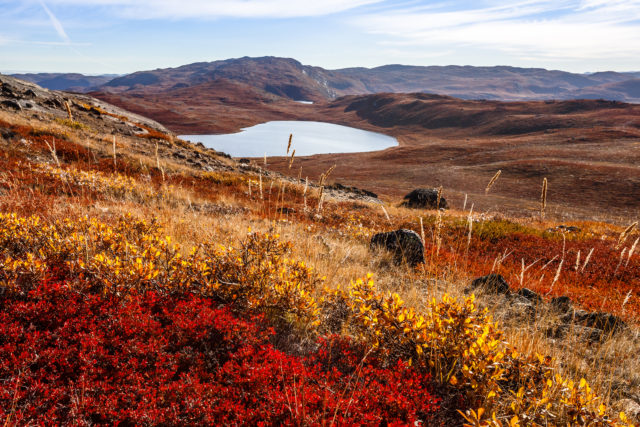
Data that reinforced the relationship between ice cores from Greenland and other paleodata (37) showing sometimes catastrophic climate change over a short time, it was quite clear by 1990 that despite the natural changes to the planet's climate processes, the existing data had already accounted for it, and undoubtedly humanity's actions since the Industrial Revolution were increasing greenhouse gases and increasing global average temperatures.
The IPCC (Intergovernmental Panel on Climate Change) was founded in 1988 under the direction of the United Nations and World Meteorological Association at the request of its most senior members (38). Their role is to assess climate change data as it comes to light and to make proposals to the UN and its member bodies on what to do to face down the challenges of a warming world. It was in the final decade of the millennium that climate science finally broke out of its niche within the Earth Sciences and began forming bonds elsewhere - anthropology, archaeology, geology, and even economics and business, as the changes required to mitigate our warming world would create a fundamental global economic shift.
The 21st Century
This millennium is just a couple of decades old, but climatology has come a long way in that time. Since the turn of the Millennium, few scientific issues have become so popular as a matter of public discourse as climate change. But it's not all good news; the issue has received much political attention through attempts by lobby groups to muddy the waters on the evidence. Yet the evidence only continues to get stronger. The damage that science denial can do in any field is potentially limitless, but climate change is critical and a strong case in point because it is time sensitive. The longer the data accumulates, the more evidence we acquire and disseminate without action, the more damage is being done.
The arrival of big data analytics has helped to further the collection, collation and analysis of data sets, making it far easier and faster than ever before to produce accurate results based on land temperature, sea temperature, and at various points in the atmosphere. It is also helping scientists all over the world make decisions and present accurate data to decision makers in government (39). Big data analytics also allows scientists to process disparate data sets without intense labor. One of the results of this is the understanding of the subtle nuances that exist between natural forcings (such as solar activity and volcanoes) and human-induced climate change such as greenhouse gas emissions.
The Future Challenges for Climatology
Many challenges associated with climate change are challenges for ecologists, conservationists, and for politicians and other decision-makers to solve, not necessarily for climate researchers. But climatology does have an exciting future of new discoveries and new technologies; it also has some new challenges to rise to as we head deeper into the 21st century.
Studying the Effects on Landscapes
As climate change brings changes all over the globe, it will be down to climatologists to observe these changes as they happen and continue to publish data for decision-makers to respond. We are already seeing these effects, most notably in the developing world for people who do not have the resources of the first world and live in so-called marginal landscapes. Climatology is at the forefront of looking at these changes and comparing data from different years, decades and even centuries. Some lands are sensitive to changes in the water cycle and impact on aquatic resources most critically - not just for drinking water, but also for crops (40). Without water, people in the most affected lands cannot feed themselves. Climate change can also mean the difference between whether an area receives rain or snow, and the longer-range and long-term effects including flooding when seasonal temperatures are too high. This has the potential for long-term effects.
Studying the Climate Effects of Urbanism
It can't be halted, either in the developed nor the developing world, but the spread of urbanism in the landscape creates far greater energy consumption than rural land (41, p345). Homes need heating and lighting, but so do public buildings, street lighting, shopping malls and industry, commerce and residential zones use far greater energy levels per square foot. Even without the resource consumption, the spread of urban development causes intense ecological change. But life adapts, and many lifeforms have thrived in urban centers. Plenty of evidence exists now to suggest that urban centers create microclimates (41, p344). Urban heat islands create large, warm areas of air that affect regional and even global climate when large enough. This is why urban centers will be a key battleground in mitigating the effects of climate change and why climatologists are so interested in studying their effects over time.
Making Sense of Big Data
While big data has been a welcome addition to the data sets for climatology, the issue remains that quantity does not equal quality. Climatology in the 21st century runs an even greater risk of accumulating useless and irrelevant or even masses of counterproductive anomalous data, and it will be a major challenge for climatologists to further develop their understanding of data quality in this century (42). New sources include the ever-increasing paleoclimate data, proxy data, and the use of satellite data to take recordings in areas generally inaccessible for manned research - not to mention that using satellite data is far cheaper. Climatology will continue to deliver these data sets and will, in future, be required to provide broader data sets and more accurate analyses for environmental scientists in other areas. More than ever, climatology is beginning to overlap with data science.
Open Access vs Intellectual Property Rights
Over the last ten years, researchers in many sciences have called for all scientific data to become open access - the idea that anybody, anywhere, with the means to do so, can request the findings of published research. At present, such data is limited to academic journals which are beyond the finances of the average person. Also, governments the fund such data have traditionally been fiercely protective of the data that their public funds have produced. Both paradigms are understandable - governments that invest in public science projects wish for their country to be the sole beneficiary of the results of that data (43), but that does not help the academic community and it's proving a barrier to both public understanding of climatology and to driving the science forward by arming researchers with as much information as possible.
Sub Divisions of Climatology
Climatology in its modern form is less than a century old, but already a number of subdivisions have grown up within the discipline to cope with the data and to create niches for experts to specialize.
Applied Climatology
As with applied chemistry, applied physics and so on, applied climatology is about studying what is actually happening now rather than climate theory of what will happen, or the use of theoretical models to predict events in the short or long-term future (44). This means that applied climatology has much in common with some of the other atmospheric sciences such as meteorology. Climate events that are happening now (for example, any of the oscillations mentioned above) have immediate and measurable impacts on weather systems - locally and far away. It is arguably the oldest form of climatology, originating long before the birth of the modern science. Military decisions were made based on climate events and weather patterns, and Ancient Egypt's system of agriculture was based on the observation of the fluctuations in the Nile's “inundation” (flood waters bringing nutrient-rich silt that was the backbone of their agricultural surplus) (45) allowed for long-term planning of social, agricultural and civic project planning.
Bioclimatology
Overlapping with ecology in many ways, bioclimatology is the study of climate change (both natural and anthropogenic) on various life forms and ecological systems. It provided one of the earliest conundrums for naturalists, especially with the discovery of ancient aquatic fossils in desert areas, and fossilized tropical botanical remains found in areas such as tundra. As a climate changes - getting wetter or drier, warmer or cooler, that will have a measurable and noticeable impact on the biodiversity as well as the species profiles within these areas (46). Mostly, bioclimatology researchers are concerned with the human impact on ecology and biodiversity, but they study any landscape change resulting from climate change. Some researchers will also overlap with medical research. As conditions north of the equator in Eurasia and the Americas become warmer and humidity increases, we may observe increasing instances of malarial mosquitos into northern Mexico, the southern US and southern Europe, for example.
Boundary-Layer Climatology
The Boundary Layer is the lowest level of the atmosphere, the area most affected by local and planetary climate change (47). This is the atmospheric layer that experiences the most turbulence and holds the important weather systems, interacting with the “thermals”, distributing air and moisture across the planet. Therefore, boundary layer climatologists study the networks and interactions of the lower atmosphere, and their impact on weather and climate systems, but also how the network of winds are affected by such climate phenomena as rising air and sea temperatures, urban heat islands, and natural events such as volcanic activity. It also has critical uses for immediate weather patterns in meteorology. Neither boundary-layer climatology nor meteorology exist in isolation and are intrinsically linked.
Dynamic Climatology
No science exists in a bubble and no subdivision of a broad science does so either. Dynamic climatologists are concerned with examining the accumulated sum total of information acquired from all related sciences (48), typically quantitative in nature, based on observed phenomena. Dynamic climatology examines and handles everything from paleodata to volcanic eruption to looking at short range or short-term weather patterns to long-term climate effects from natural or anthropogenic causes. This area of climatology uses a holistic approach.
Historical Climatology
While paleoclimatology (see below) is concerned with the climate of the ancient past, historical climatology is concerned with climate change, alteration and patterns that have existed on the human measurement scale. It blends climatology with environmental history (50) and sometimes, can complement research in the human Earth sciences such as anthropology, archaeology and human geography. It seeks to recreate or profile past environments, examining past natural disasters and their effects. This would include the study of the Little Ice Age and the Medieval Warm Period, the environmental changes that resulted from volcanic explosions at Krakatoa and Thira. However, it can also examine the human impact on the environment and the after-effects of such human activities as land clearance for agriculture (for example, the Neolithic Agricultural Revolution shows clear and distinct topographical change and is traceable in the ecological and archaeological record).
Hydroclimatology
How do the natural and anthropogenic changes to the climate affect our waterways? Increased drought and flooding, ocean acidification, coral bleaching, the effects of ocean temperature and pH of our oceans affect how much plankton is produced in any cycle. In turn, this affects the ocean lifecycle. Hydroclimatology is a vitally important area of climatology because around 2/3 of our planet is covered in ocean. It's a vast, complex and vital ecosystem. Sea level rises, ice cap melt, ocean particles, the oceans as a carbon sink, precipitation and drought all contribute to something called the “Water Budget” (51) and it is this that hydroclimatologists spend most of their time analyzing.
Paleoclimatology
Historical climatology covers the historical record - starting with the invention of instruments able to take measurements while paleoclimatology is concerned with the entire history of the planet's climate record (52). Typical data sets include taking radiocarbon dates and chemical signatures as ecological indicators from such areas as tree rings - also known as dendrochronology - Antarctic and Arctic ice cores, information from fossilized coral and vegetation, and lake and river sediments. It is through this area that we know the Earth has always changed; it is how we know that Earth has undergone at least five ice ages, the Medieval Warm Period and Little Ice Age, and, when comparing ecological data and fossils, how we know the effects that high or low atmospheric carbon will have on the climate. It has also been integral to demonstrating how quickly a climate can change - with a catastrophe or massive climatic event, sometimes within a matter of decades.
Physical Climatology
Most of climatology is concerned with looking at data and making projections or presenting the data as facts, statistics, graphs and hard figures - it is quantitative in nature. Physical climatology is more qualitative. It examines and explains how climate can shape topography and geographical systems. For example, it seeks to explain how glaciation is one factor capable of forming valleys and mountains, how extreme flooding events will change a landscape. For example, we know that the Vlad - of North America's largest glaciers created the enormous basin around the Great Lakes and then filled it with meltwater to create the lakes we have today (53).
Synoptic Climatology
This branch of climatology is concerned with circulation patterns within the atmosphere, paying particular attention to how these circulations create differences in climate between either topographically comparable or geographically close locations (49). It creates categories of synoptic climate patterns and then attempts to discern what a climate is going to look like in the immediate future based on season weather patterns and anomalous phenomena. Typically, they may be concerned with the weather patterns that create hurricanes and tornadoes.
Sources
- http://climatology.co.uk/climatology-and-meteorology#.W0iXCbjTXIU
- https://oceanservice.noaa.gov/facts/ninonina.html
- https://www.climate.gov/news-features/blogs/enso/how-enso-leads-cascade-global-impacts
- https://www.metoffice.gov.uk/research/climate/seasonal-to-decadal/gpc-outlooks/el-nino-la-nina/enso-impacts
- https://www.climate.gov/news-features/blogs/enso/what-mjo-and-why-do-we-care
- https://www.rmets.org/events/madden-julian-oscillation-and-its-importance-medium-range-forecasting
- https://www.metoffice.gov.uk/learning/atmosphere/north-atlantic-oscillation
- http://climatology.co.uk/interdecadal-pacific-oscillation#.W0yqRbjTXIU
- https://climate.nasa.gov/causes/
- https://www.sciencedirect.com/science/article/pii/030626199390018K
- http://apps.sepa.org.uk/SPRIPA/Pages/SubstanceInformation.aspx?pid=65
- https://www.livescience.com/27692-deforestation.html
- https://www.pmel.noaa.gov/co2/story/What+is+Ocean+Acidification%3F
- https://link.springer.com/content/pdf/10.1007/s11434-011-4641-6.pdf
- https://skepticalscience.com/coming-out-of-little-ice-age.htm
- https://www.livescience.com/4846-eruption-thera-changed-world.html
- https://www.newscientist.com/article/mg18925385-000-krakatoa-eruption-cooled-the-world/
- https://www.jstor.org/stable/3984460
- https://www.sciencedaily.com/releases/2013/08/130807134127.htm
- https://earthobservatory.nasa.gov/Features/Paleoclimatology
- http://adsabs.harvard.edu/full/1990JHA....21..111E
- https://www.sciencehistory.org/distillations/magazine/future-calculations
- http://articles.adsabs.harvard.edu//full/1897PASP....9...14A/0000014.000.html
- https://history.aip.org/climate/co2.htm
- https://www.newscientist.com/article/dn18949-the-history-of-ice-on-earth/
- https://history.aip.org/climate/solar.htm
- https://journals.ametsoc.org/view/journals/bams/89/9/2008bams2370_1.xml
- https://history.aip.org/climate/cycles.htm
- https://www.epa.gov/history/origins-epa
- https://toxtown.nlm.nih.gov/text_version/chemicals.php?id=9
- https://skepticalscience.com/global-warming-scientific-consensus-intermediate.htm
- http://science.sciencemag.org/content/218/4579/1273
- https://www.ipcc.ch/organization/organization.shtml
- https://www.ncbi.nlm.nih.gov/pmc/articles/PMC4174912/
- https://www.ucsusa.org/global-warming/science-and-impacts/impacts/water-and-climate-change.html#.W1BWbrjTXIU
- https://www.uni-due.de/imperia/md/content/geographie/klimatologie/82_urban_climate_and_global_change.pdf
- https://ntrs.nasa.gov/archive/nasa/casi.ntrs.nasa.gov/20160002946.pdf
- http://science.sciencemag.org/content/331/6018/700.full
- https://journals.ametsoc.org/view/journals/bams/86/7/bams-86-7-915.xml
- https://epdf.tips/the-oxford-history-of-ancient-egypt.html
- https://www.britannica.com/science/bioclimatology
- https://www.metoffice.gov.uk/research/foundation/parametrizations/boundary-layer
- https://glossary.ametsoc.org/wiki/Dynamic_climatology
- https://glossary.ametsoc.org/wiki/Synoptic_climatology
- https://www.historicalclimatology.com/definitions.html
- https://www.ncdc.noaa.gov/news/what-paleoclimatology
- Guide to Parasitology - November 19, 2018
- Deserts as Ecosystems and Why They Need Protecting - November 19, 2018
- Conservation: History and Future - September 14, 2018
Related Articles
Featured Article
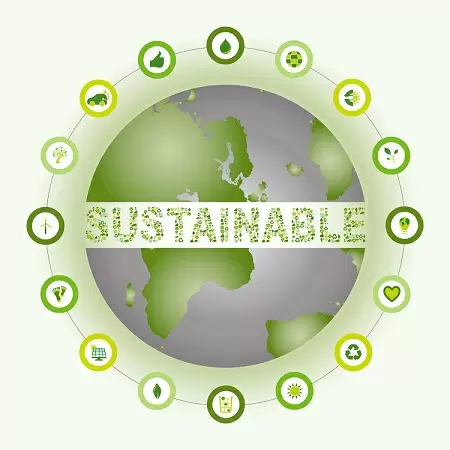
What Is Sustainability and Why Is It Important?


